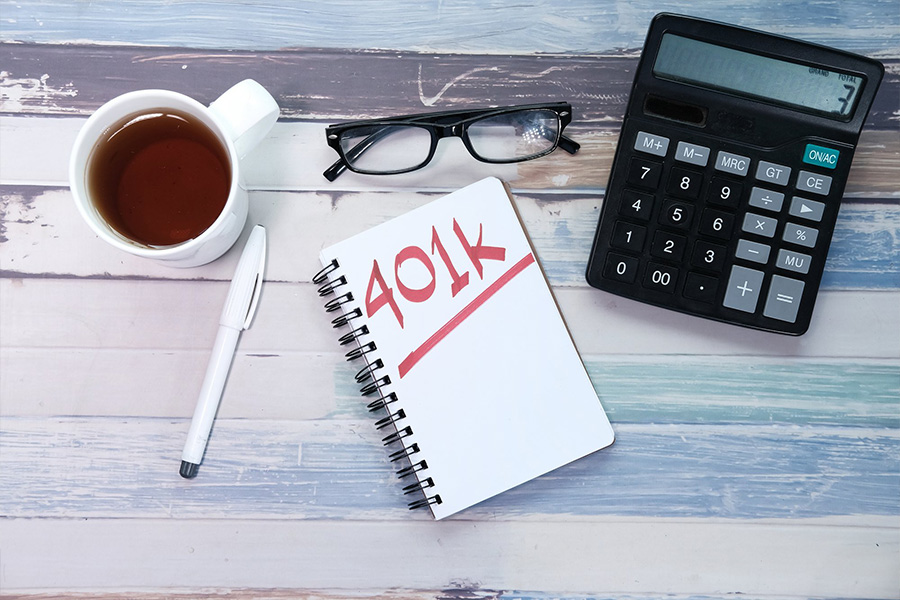Table of Contents
If you have a clear goal for your retirement fund, chances are every paycheck and dollar you receive is going into the account that will help you reach your goals. However, after some time, the question arises: How do I know how much I have accumulated in my 401k?
Table of Content
- What is a 401(k)?
- Which is better 401(k) or a Roth 401(k)?
- Which is better 401(k) or an IRA?
- How do I know how much I have accumulated in 401k?
- How do I know how much I have accumulated in my 401k if I am no longer with the same company?
What is a 401(k)?
A 401(k) is an employer-sponsored retirement plan that allows workers to save money on a deferred basis. Employers often match contributions up to a percentage of salary. It’s like any other retirement plan in that it’s about saving money and cutting taxes as you go. Like an IRA, you’ll pay taxes once you start making withdrawals in retirement.
If you opted in when you were hired, a percentage of your salary (say, 3%) is taken out of each paycheck and put into a 401(k) retirement account. Your employer may add a little more money, or perhaps the same amount. That money is usually invested, and it accumulates.
Which is better 401(k) or a Roth 401(k)?
There are different types of 401(k)s . A Roth 401(k) works the same way as a Roth IRA. Although it’s still employer-sponsored, it uses after-tax income to fund itself, so you pay taxes now, not later in retirement . While you can deliberate on what is better and what is best for you, the general consensus is that the Roth format is useful if you believe that later, when you start living on your retirement, the level that you will have to pay taxes will be higher, so if you pay now you will have saved on the payment of taxes.
In contrast, a traditional 401(k) proponent might argue that the ability to put more money into an account at the beginning and over time allows the saver to take full advantage of compound interest.
What is better 401(k) or an IRA?
One of the advantages of a 401(k) over an IRA is the number of contributions you can make in a year. For 2020, that limit is $19,500. That’s an advantage over an IRA, which allows for much smaller contributions. One drawback to a 401(k) is that it’s held in an account managed by the company chosen by your employer, and you probably have a limited selection of investments. Many, for example, will be invested in the company you work for. While that can be great if you work for Berkshire Hathaway (BRK.A), it doesn’t always allow for much diversification.
To start saving for retirement in a 401(k) plan, all an employee has to do is sign up for a 401(k) plan with their employer (usually the first day of work), choose the percentage of their salary with which you are going to contribute and choose your investment vehicles. Then the employer takes care of the rest. Before making any investment selections for the 401(k) plan, it’s a good idea to first talk with a financial advisor.
How do I know how much I have accumulated in 401k?
If you already have a 401(k) and want to check the balance, it’s pretty easy. Normally, you should receive your account statements either on paper or electronically. If not, talk to your work’s Human Resources department and ask who the provider is and how to access your account. Companies generally do not manage pension and retirement accounts themselves. Outsourced to investment managers.
Some of the largest 401(k) investment managers include Fidelity Investments, Bank of America (BAC), T. Rowe Price (TROW), Vanguard, Charles Schwab (SCHW), Edward Jones, and others.
Once you know who the plan sponsor or investment manager is, you can go to their website and log in, or reset your login, to view your account balance. Some steps or security measures will be included if you don’t have a username and password for the account.
You should know all of this information from the time you start your 401(k), either when you are hired or when the retirement account option becomes available to you.
Details such as contributions, company matching, and information on how to check your balance history and current holdings should be provided.
How do I know how much I have accumulated in 401k if I am no longer with the same company?
If you are no longer in the same job, to know the balance you have accumulated in a 401k you must follow a different process.
Let’s say you quit your job and start a new one. And you didn’t turn your retirement into an IRA. You can be calm, that money does not disappear. It’s still there, it’s still yours. To get it, contact the Human Resources department of your former employer. If you’ve recently moved out, it shouldn’t be too hard to locate. If it has been some time, it would help to present old ID and statements.
